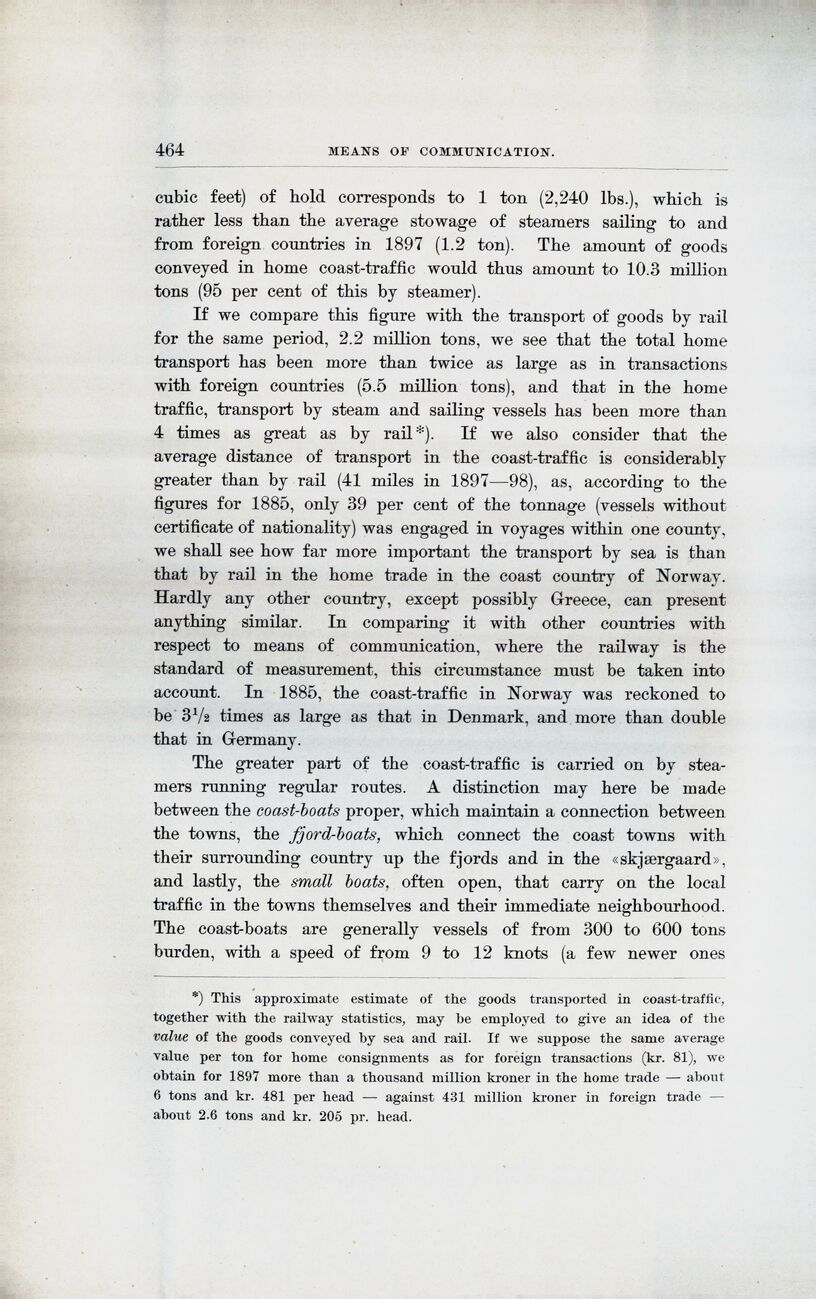
Full resolution (JPEG) - On this page / på denna sida - Means of Communication, by Bernh. Andersen, Andr. M. Hansen and J. T. Sommerschild

<< prev. page << föreg. sida << >> nästa sida >> next page >>
Below is the raw OCR text
from the above scanned image.
Do you see an error? Proofread the page now!
Här nedan syns maskintolkade texten från faksimilbilden ovan.
Ser du något fel? Korrekturläs sidan nu!
This page has been proofread at least once.
(diff)
(history)
Denna sida har korrekturlästs minst en gång.
(skillnad)
(historik)
cubic feet) of hold corresponds to 1 ton (2,240 lbs.), which is
rather less than the average stowage of steamers sailing to and
from foreign countries in 1897 (1.2 ton). The amount of goods
conveyed in home coast-traffic would thus amount to 10.3 million
tons (95 per cent of this by steamer).
If we compare this figure with the transport of goods by rail
for the same period, 2.2 million tons, we see that the total home
transport has been more than twice as large as in transactions
with foreign countries (5.5 million tons), and that in the home
traffic, transport by steam and sailing vessels has been more than
4 times as great as by rail [1]. If we also consider that the
average distance of transport in the coast-traffic is considerably
greater than by rail (41 miles in 1897—98), as, according to the
figures for 1885, only 39 per cent of the tonnage (vessels without
certificate of nationality) was engaged in voyages within one county,
we shall see how far more important the transport by sea is than
that by rail in the home trade in the coast country of Norway.
Hardly any other country, except possibly Greece, can present
anything similar. In comparing it with other countries with
respect to means of communication, where the railway is the
standard of measurement, this circumstance must be taken into
account. In 1885, the coast-traffic in Norway was reckoned to
be 3 ½ times as large as that in Denmark, and more than double
that in Germany.
The greater part of the coast-traffic is carried on by
steamers running regular routes. A distinction may here be made
between the coast-boats proper, which maintain a connection between
the towns, the fjord-boats, which connect the coast towns with
their surrounding country up the fjords and in the «skjærgaard»,
and lastly, the small boats, often open, that carry on the local
traffic in the towns themselves and their immediate neighbourhood.
The coast-boats are generally vessels of from 300 to GOO tons
burden, with a speed of from 9 to 12 knots (a few newer ones
<< prev. page << föreg. sida << >> nästa sida >> next page >>